Protecting Your Team: A Complete Handbook on Workplace Safety in Australia
It’s no secret that workplace safety is essential to a successful business. Keeping employees safe while they work will ensure their physical and mental well-being and create a positive and productive environment. In Australia, there are comprehensive guidelines to help employers protect their staff in the workplace, but how do you ensure you comply with all the regulations?
This guide will take you through everything you need to know about safeguarding your workplace in Australia – from understanding risks and hazards to creating health and safety policies and procedures for your team. We’ll even cover training requirements and employee rights so you can be confident that everyone who works for you is safe, secure and supported.
You want the best for your workforce, and it starts with understanding what needs to be done to keep them safe. With our detailed guide on Safeguarding Your Workplace: A Comprehensive Guide to Workplace Safety In Australia, we’re here to provide support with every step of the way. So let’s get started!
Definition Of Workplace Safety
Workplace safety can be likened to a jigsaw puzzle, with many pieces that must fit together before the whole picture is complete. It’s important for employers and employees alike to clearly understand what workplace safety means, so they can ensure everyone in their business is safe and secure.
So just, what is workplace safety? In its simplest form, it refers to any practice or procedure designed to ensure workers’ health and well-being while on the job. This includes physical protection from hazardous machinery, hazardous chemicals or slippery surfaces and mental protection from stressors like long hours and heavy workloads.
In addition to these direct measures taken to protect against harm, other elements make up an effective workplace safety program. These include:
- Having proper policies in place regarding worker training and occupational health;
- Education about the risks associated with certain tasks;
- Safety equipment maintenance;
- Regular inspections of work areas;
- Emergency preparedness plans;
- Enforcing industry standards for personal protective equipment (PPE).
All of these components play an important role in creating a safe working environment where people feel comfortable, secure, valued and respected.
Guidelines For Employers
Ensuring workplace safety is the responsibility of both employers and employees. As an employer, it’s your job to create a safe working environment where everyone can do their jobs without fear of harm. There are several guidelines you should keep in mind when developing a comprehensive workplace safety plan:
- Establishing safety standards: Employers need to set clear expectations regarding safety by creating specific policies related to hazardous materials or activities, the use of protective equipment, and regular inspections and maintenance. Not only will this ensure that workers are properly trained and informed on how to perform their duties safely, but it will also help minimize any risks associated with their work.
- Identifying potential hazards: Employers must also take steps to identify any potential hazards present in the workplace, from faulty machinery to slippery surfaces or inadequate lighting. Once these have been identified, appropriate measures can be implemented, such as additional training for staff or improved safety protocols.
- Communicating effectively: When it comes to implementing effective workplace safety practices, communication between employers and employees is key. This means providing guidance about what’s expected from them regarding behaviour and performance, clearly outlining procedures for responding quickly if an incident occurs, and ensuring that all relevant information is shared. Hence, everyone knows what’s going on at all times.
Risk Assessment Process
Now that you have identified the potential hazards in your workplace, it’s time to take a closer look at how to assess and manage those risks. Risk assessment is an important part of any safety management plan and involves identifying, evaluating and controlling the various hazards present in a work environment. The process typically includes four key steps: risk identification, hazard control, risk mitigation and workplace evaluation.
Risk identification involves determining what type of risks exist within your workplace – from hazardous materials to conditions or activities which can lead to injury or illness. This step should involve gathering as much information as possible to assess all potential risks accurately.
Hazard control refers to taking action to reduce the likelihood of harm occurring due to these identified risks. This could include introducing new equipment or procedures designed to minimize exposure to certain hazards, implementing training programs for staff on how best to respond if an incident occurs, or providing personal protective equipment such as gloves or eye protection where necessary.
Finally, employers must regularly evaluate their workplace safety practices to identify areas needing improvement. Carrying out regular inspections allows employers not only to ensure compliance with regulations but also to stay up-to-date on any changes in legislation or industry standards which may need addressing. Additionally, this will help keep employees safe by ensuring that any previously unidentified risks are addressed before they become major issues.
Employee Training Requirements
Having identified potential risks and implemented hazard control measures, employers must ensure that all employees know the safety standards in place. This can be achieved through employee training – providing staff with the knowledge and skills necessary to work safely and follow safety protocols.
Employers should develop a comprehensive safety training program that outlines their workplace safety expectations as well as any relevant regulations or industry codes of practice.
Employees should also be made aware of any new equipment or procedures introduced in order to reduce risk, so they can use these correctly when carrying out their duties.
Additionally, regular refresher courses on existing practices should be undertaken by all staff members to keep them up-to-date with changing laws or technological advancements, which may affect how tasks are completed safely.
Overall, developing an effective employee training program is crucial for ensuring both employer peace of mind and worker well-being within your organization. Providing workers with the right information and resources allows them to recognize hazardous situations quickly and respond appropriately, reducing the chances of injury or illness occurring due to unsafe working conditions.
With this in mind, employers must commit to creating a culture where communication around workplace safety is encouraged from all levels within their business in order to maintain safe and healthy environments for everyone involved.
Enforcement Of Safety Standards
Once safety protocols have been established and communicated to staff, employers must ensure that these standards are being enforced in the workplace.
This involves monitoring employees’ behaviour regularly to make sure they are following all relevant regulations – both those set by their organization as well as any industry or government laws pertaining to workplace safety in Australia.
To facilitate this process, employers should consider introducing measures such as regular checks of employee compliance with safety rules or having supervisors observe workers for potential hazards at least once per shift.
Additionally, it is important to provide feedback when mistakes occur so that staff can learn from them and avoid similar incidents in future. Employers may also wish to consider implementing an incident reporting system where issues that arise can be tracked and addressed swiftly before causing further harm.
Ultimately, enforcing workplace safety standards ensures that everyone within your organisation is protected against injury or illness due to unsafe working environments. It also demonstrates respect for employees who might otherwise suffer consequences if exposed to hazardous conditions.
By taking action now and ensuring all necessary steps are taken towards creating a safe work environment, businesses can help protect their people while keeping operations running smoothly and efficiently.
TIP: Ensure staff understand the importance of adhering to workplace safety regulations by incorporating training into onboarding processes and providing refreshers throughout the year.
Benefits Of A Safe Working Environment
As companies strive to create a safe work environment, the benefits of doing so become more and more evident. Not only does it ensure that employees are protected from potential harm, but it can also positively affect other areas like staff morale and expenses. In this section, we’ll explore some of the advantages of having a secure workplace for everyone involved.
One of the most immediate benefits is improved staff morale. When people feel as though their safety is taken seriously, they tend to be happier in general, which translates into better job performance and higher productivity levels.
Furthermore, suppose workers know that their employer values workplace safety enough to invest time and money into creating a secure environment. In that case, they will usually appreciate these efforts, which could ultimately improve team dynamics and job satisfaction overall.
Another key benefit of prioritising workplace safety is reduced costs associated with injuries or accidents due to hazardous conditions in the office. Companies are often required to pay out medical fees or compensate any affected parties when an incident occurs – something which can quickly add up over time.
By investing resources into preventing such issues from arising in the first place through proper risk management measures, organisations can save themselves from unnecessary financial losses while protecting their workforce at the same time.
Finally, by taking steps towards establishing a safe working environment, employers can experience enhanced productivity as well as increased efficiency across all departments since fewer disruptions caused by injury or illness will occur throughout operations.
This means businesses can get back on track faster after any unforeseen complications arise without sacrificing employee well-being in order to do so.
Creating an atmosphere where people understand how important workplace safety is clearly paying off for both employers and employees alike – offering multiple tangible benefits that should not be overlooked!
We offer these courses in local workplace environments as well as through digital streaming services in Capital cities and also rural locations in between.
Frequently Asked Questions
What Are The Legal Requirements For Workplace Safety In Australia?
When it comes to workplace safety, Australia has many legal requirements that employers must abide by in order to ensure the safety of their staff. Employers need to understand and comply with these regulations as they are essential elements of a safe working environment.
Employers should be aware of all relevant workplace safety laws and regulations in Australia. These include national standards and codes of practice, occupational health and safety legislation, workers’ compensation laws, hazardous substances laws, and other applicable industry-specific laws or regulations.
Additionally, employers must implement appropriate workplace safety policies that reflect the compliance requirements set out in each law or regulation. Such policies should cover areas such as hazard identification, risk assessment procedures and emergency response plans so that employees know how to respond appropriately if an incident occurs onsite.
It is also recommended that Australian workplaces monitor their own performance against regulatory guidelines through regular audits conducted by qualified professionals. This allows organisations to identify potential risks before incidents occur, ensuring optimal levels of safety compliance at all times.
Moreover, having an effective system of monitoring in place may help reduce costs associated with non-compliance fines from relevant authorities.
Overall, understanding and adhering to Australian workplace safety regulations is critical for creating a safe and secure work environment for everyone involved – employees and employers.
How Can I Ensure That My Workplace Is Compliant With Safety Regulations?
It’s no secret that workplace compliance and safety regulations are essential for a successful, safe business. But how do you ensure your workplace is compliant with all the applicable safety regulations? That’s a question many people grapple with on a daily basis.
The best way to start is by conducting an audit of your current workplace practices regarding health and safety. This should include everything from hazard identification and assessment to emergency planning, risk management, training sessions, communication systems, record keeping, and even incident reporting protocols.
Once these procedures have been established, monitoring ongoing compliance with the relevant safety regulations will be easier.
Enforcement of these rules is also important – there need to be clear consequences in place if they’re not being followed correctly or consistently. Establishing regular audits can help identify potential issues before they become major problems while providing an additional layer of protection against any negligence or malfeasance.
Furthermore, having an experienced team member who understands the laws and regulations related to workplace safety can make sure everyone remains up-to-date on their obligations under the law.
Taking proactive steps towards safeguarding your workplace ensures that all employees feel secure at work, which in turn makes for happier staff members and improved productivity levels within the organisation as a whole – win-win! So don’t wait until something goes wrong; take action today so that you’re always prepared for whatever comes your way tomorrow.
What Are The Consequences Of Not Following Safety Regulations?
It’s essential to be aware of the consequences that come with not following safety regulations in the workplace. Non-compliance penalties, occupational health hazards and legal ramifications can seriously impact employees and employers alike.
Failing to adhere to safety law compliance may lead to workplace injury risks or, even worse – if an employee is injured due to negligence, it could result in costly litigation for the employer.
The most important thing you should know about non-compliance penalties is that they vary from state to state. The severity of punishments can range from fines and suspensions to criminal prosecution and hefty monetary damages for those found guilty of violating safety laws. Therefore, businesses must ensure their workplaces comply with safety regulations before any accidents occur.
Aside from financial repercussions, failing to follow safety rules also poses a threat to employee wellbeing. Occupational health hazards such as dust particles, noise pollution or toxic chemicals may cause long-term physical damage if employers don’t take proper precautions.
In order to protect your staff and avoid facing legal action, make sure you’re fully informed on relevant laws regarding workplace safety and do everything possible within reason to create a safe environment for everyone involved.
This guide provides invaluable information when it comes to safeguarding your workplace. Still, ultimately it’s up to employers themselves to take responsibility and comply with local laws so that no one suffers the consequences of negligence.
What Are The Best Practices For Communicating Safety Information To Employees?
It’s a no-brainer that safety should always come first in the workplace. Communicating vital safety information to your employees is just as important for keeping everyone safe and sound, but it can be tricky to get right. To ensure you’re on the same page regarding employee safety, here are some best practices for communicating safety information at work.
When it comes to conveying safety information, clarity is key. The idea is that every single employee knows what they need to do – and not do – in order to stay safe while working. A good way of doing this is by having regular meetings with staff where all relevant safety practices or changes can be discussed openly and transparently. This will ensure everyone feels included in the conversation, which is essential if you want them to take the message seriously.
Another important thing to remember when discussing workplace safety with your team is that knowledge isn’t power unless it’s acted upon correctly. After disseminating any new information regarding employee safety, have an open dialogue about how each individual plans on implementing those practices into their daily routine.
If mistakes are made, don’t reprimand – instead, use these opportunities as learning experiences, so everyone has a better understanding of the safety regulations going forward.
From meetings and discussions to handouts and posters around the office, you can spread awareness amongst your workforce on how to stay safe at work – all of which start with effective communication strategies designed specifically for your company’s needs!
What Are The Most Effective Methods For Monitoring Employee Compliance With Safety Regulations?
When it comes to workplace safety, effective employee monitoring is key. Ensuring employees comply with safety regulations is a cornerstone of any successful safety program. There are several methods employers can use to keep their workforce safe and in compliance with safety guidelines.
Employee monitoring involves the constant surveillance of workers to ensure they are adhering to established rules and procedures. This could include:
- Regular inspections of work areas for potential hazards;
- Surveillance cameras;
- Requiring staff members to wear protective gear or uniforms when working in hazardous environments.
By implementing these monitoring methods, employers can help identify instances where an employee may not be following proper safety protocols and take corrective action if needed. Additionally, having clearly defined expectations and consequences for failing to meet them will also aid in ensuring workers comply with all applicable regulations.
Employers should also consider providing regular training on workplace safety topics such as the proper handling of hazardous materials, the importance of wearing personal protective equipment (PPE), etc. so that employees are aware of what’s expected from them.
Businesses need to understand that creating a culture of safety starts with making sure everyone feels valued and included — this helps foster cooperation and encourages people to follow through on necessary actions like complying with regulations. When employees feel appreciated and respected by their employer, they tend to do whatever it takes to make sure they’re doing their part in keeping the workplace safe.
Conclusion
In conclusion, it’s clear that safeguarding your workplace is a must for any business in Australia. To ensure that everyone remains safe and compliant with the law, employers need to have an understanding of their legal requirements, as well as effective communication strategies when it comes to safety regulations.
Employers also need to be vigilant about monitoring employee compliance; failing to do so can result in hefty fines and other penalties. So let’s make sure we stay ahead of the curve by taking these steps today!
As employers, we should think of this process like putting on our seatbelts; it only takes a few moments but could save us from serious complications down the road. We need to remember that keeping our workplaces safe isn’t just good practice – it’s essential if we want to keep operations running smoothly and avoid any potential hiccups along the way.
So let’s get out there and rock the boat with workplace safety – no more excuses! It may take some effort up front now, but if done correctly, you’ll be thanking yourself later.
Resources & Further Reading
Work Health and Safety – The Department of Employment and Workplace Relations





















